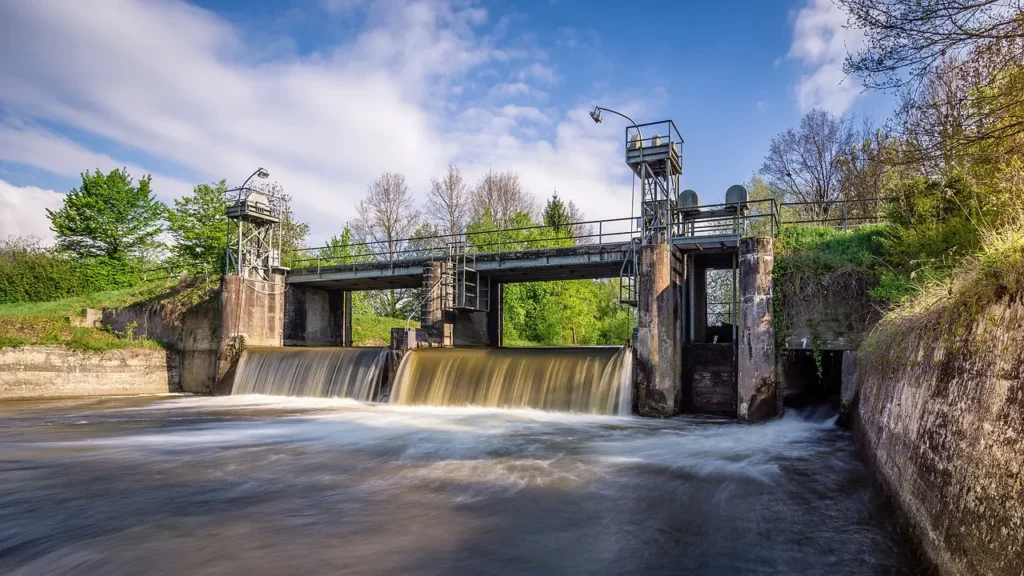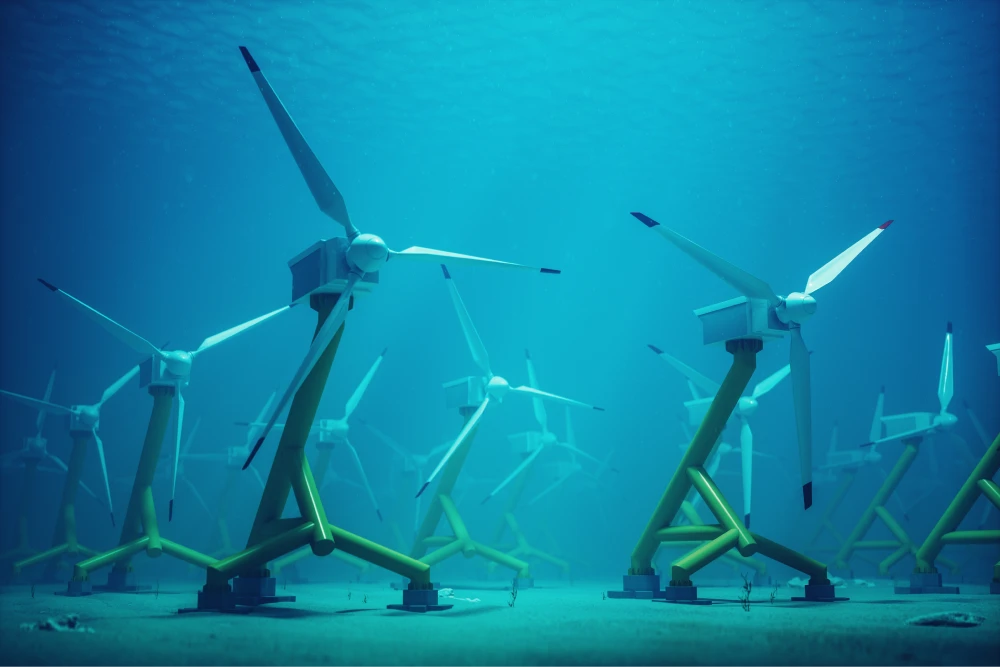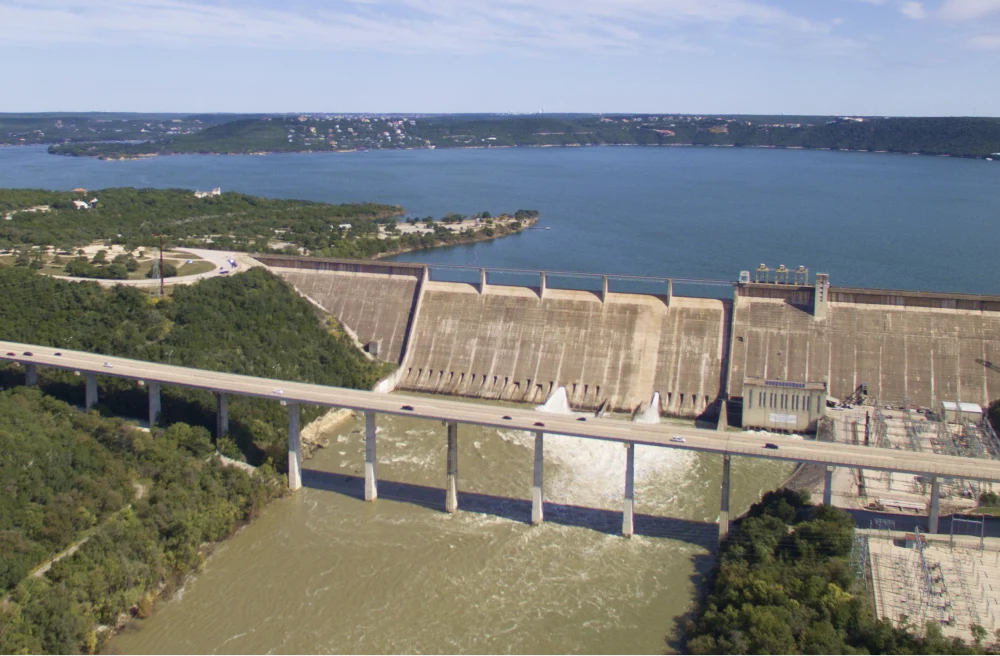Pros and Cons of Tidal Energy
5 minute readTidal energy is an emerging form of renewable power that harnesses the kinetic and potential energy of ocean tides to
Home > Learning Center > Energy Production > Environmental Impact of Hydropower
Hydropower offers clean electricity but also alters ecosystems, water quality, and greenhouse gas levels.
3 minute read • Last update June 2025

Hydropower is often praised for its ability to generate large-scale electricity without burning fossil fuels. As one of the oldest and most widely used forms of renewable energy, it plays a critical role in many national grids. However, the environmental impacts of hydropower are complex and highly dependent on how and where it is implemented. From altering river ecosystems to contributing to methane emissions, hydropower’s impact on the environment is far from negligible.
Below, we explore 10 key environmental effects of hydropower, including both its drawbacks and advantages, to help answer the question: How does hydropower impact the environment?
Building a dam changes the natural flow of rivers, disrupting the migration patterns of fish and other aquatic life. According to the U.S. Geological Survey, these changes can fragment habitats and block species like salmon from reaching their spawning grounds.
Reservoirs can cause thermal stratification, where different water layers develop varying temperatures and oxygen levels. This separation can degrade water quality and threaten aquatic life by limiting oxygen availability in deeper layers. The EPA notes that thermal stratification in reservoirs has significant impacts on water quality and ecosystem health.
While hydropower does not burn fossil fuels, large reservoirs in tropical regions can emit methane due to the decomposition of submerged vegetation. A study in Nature Geoscience found that methane emissions from reservoirs may account for 1.3% of total global human-caused emissions.
Hydropower projects can flood vast areas of land, often requiring the relocation of entire communities. A 2022 study published in Global Transitions estimated that between 40 and 80 million people have been displaced by large dam projects worldwide over the course of the 20th century.
Dams trap sediment that would naturally replenish downstream ecosystems. This can degrade wetlands, erode coastlines, and lower agricultural fertility in river basins.
Changes in water flow and habitat can threaten local biodiversity. In some areas, endemic fish species and freshwater invertebrates have gone extinct following dam construction.
Reservoirs can create novel aquatic environments where invasive species thrive, outcompeting native species and disrupting established food webs. The National Park Service notes that aquatic invasives not only outcompete natives but also alter natural ecological processes, a dynamic frequently observed in reservoir ecosystems.
Reservoirs expose large water surfaces to the sun, increasing evaporation, particularly problematic in arid regions. Studies in the Journal of Hydrology estimate that some reservoirs lose more water to evaporation than is consumed by entire cities.
Despite its downsides, hydropower produces electricity without direct emissions of CO₂, NOₓ, or SO₂. According to the U.S. Department of Energy, it’s responsible for about 31.5% of total U.S. renewable electricity generation.
Hydropower, especially pumped storage systems, can quickly adjust to changes in demand, helping to stabilize the grid and complement intermittent sources like wind and solar.
A pro of hydropower is that it doesn’t emit air pollutants during operation, but it can still cause environmental pollution in indirect ways. In tropical and temperate climates, decaying vegetation in reservoirs releases methane, a greenhouse gas significantly more potent than carbon dioxide (EPA).
Additionally, stagnant water in reservoirs can lead to nutrient buildup and harmful algal blooms that degrade water quality and harm aquatic life.
Hydropower makes up a small portion of Texas’s energy mix, primarily from older facilities in the Hill Country and East Texas. The state’s geography limits large-scale expansion, but smaller-scale and pumped storage projects may offer value. These systems could help store surplus solar and wind power, improving grid stability without major environmental trade-offs.
Hydropower’s impact on the environment is a mix of long-term ecological changes and immediate renewable energy benefits. As global energy systems evolve, it’s essential to weigh the environmental effects of hydropower alongside its contribution to decarbonization. With better technology, environmental safeguards, and site selection, the industry can reduce harm while preserving the advantages of hydropower.
Graham Lumley, Digital Marketing Manager at BKV Energy, leads digital and traditional marketing strategies, focusing on educating Texans about the state's deregulated energy market. With over 8 years of marketing experience, he creates content to help consumers understand and save on their energy bills, bringing a fresh and dynamic approach to the industry.

Tidal energy is an emerging form of renewable power that harnesses the kinetic and potential energy of ocean tides to

How many hydroelectric dams are there in Texas? According to the Texas Comptroller, there are currently 26 hydroelectric dams in
Get $50 off your electric bill!
Use code BKVEJOINUS50
Enter your zip code to shop BKV Energy's affordable, fixed-rate Texas electricity plans. Use the promo code for $50 off your electric bill.